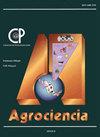墨西哥韦拉克鲁斯州宗奥利卡山中美洲红小鹿的种群特征
IF 0.5
4区 农林科学
Q4 AGRICULTURE, MULTIDISCIPLINARY
引用次数: 2
摘要
Sierra de Zongolica是墨西哥韦拉克鲁斯州一个具有新北极和新热带亲和力的生态系统和物种的生物地理区域。然而,在该地区尚未对红小鹿(Mazama temama Erxleben 1777)种群进行研究。这种类型的研究对于农村社区提出可持续管理物种和生境的行动是必不可少的。本研究的目的是描述宗奥利卡山田鼠的种群属性(分布、种群丰度和活动模式)。从2014年9月至2015年5月,通过访谈、spoor detection和camera trapping收集信息。为了确定这种鹿存在的地点,对宗奥利卡山四个市镇的76名居民进行了采访。在有鹿出没的地方,发现了20条长300米、宽1米的步行道。其中6条在原始植被区(1.8公里),10条在次生植被区(3公里),4条在耕地区(1.2公里),共记录到54个鹿迹(45个蹄印和9个粪便),相当于每公里9个鹿迹。柽柳种群数量在农垦区高于原生地和次生地。在43个相机陷阱站点中,获得了71幅独立影像。在这些图像中,79%是在18:00到05:00之间,表明了黄昏和夜间活动的模式。该物种在Sierra de Zongolica的相对丰度指数为2.5个/ km2,表明该种群在野生动物保护和可持续利用管理单位(management Units for Conservation and Sustainable Use of Wildlife, UMAs)制度下易受管理。本文章由计算机程序翻译,如有差异,请以英文原文为准。
POPULATIONAL ATTRIBUTES OF THE CENTRAL AMERICAN RED BROCKET DEER (Mazama temama) IN THE SIERRA DE ZONGOLICA, VERACRUZ, MEXICO
The Sierra de Zongolica is a biogeographic region with ecosystems and species of nearctic and neotropical affinity in the state of Veracruz, Mexico. However, no studies have been conducted on populations of the red brocket deer (Mazama temama Erxleben 1777) in this region. Such type of studies is essential to propose actions for sustainable management of the species and the habitat by the rural communities. The objective of this study was to describe the populational attributes of M. temama (distribution, population abundance, and patterns of activity) in the Sierra de Zongolica. Information was gathered through interviews, spoor detection and camera trapping from September 2014 to May 2015. To identify the sites where the deer is present, 76 inhabitants of four municipalities of the Sierra de Zongolica were interviewed. In the localities described with presence of the deer, 20 walking trails 300 m long by 1 m wide were identified. Six of the trails were in primary vegetation (1.8 km), 10 in secondary vegetation (3 km), and four in the area of cultivation (1.2 km) where 54 spoors were recorded (45 hoofprints and nine droppings), equivalent to nine signs of deer per km. The population of M. temama was higher in the farming area than in primary or secondary vegetation. In the 43 stations of camera traps, 71 independent images of M. temama were obtained. Of these images, 79 % were between 18:00 and 05:00 h, indicating a pattern of crepuscular and nocturnal activity. This species had a relative abundance index of 2.5 brockets per km2 in the Sierra de Zongolica, suggesting a population susceptible to management under the system of Management Units for Conservation and Sustainable Use of Wildlife (in Mexico, UMAs).
求助全文
通过发布文献求助,成功后即可免费获取论文全文。
去求助
来源期刊

Agrociencia
农林科学-农业综合
CiteScore
0.50
自引率
33.30%
发文量
51
审稿时长
18-36 weeks
期刊介绍:
AGROCIENCIA is a scientific journal created and sponsored by the Colegio de Postgraduados. Its main objective is the publication and diffusion of agricultural, animal and forestry sciences research results from mexican and foreign scientists. All contributions are peer reviewed. Starting in the year 2000, AGROCIENCIA became a bimonthly and fully bilingual journal (Spanish and English versions in the same issue). Since 2007 appears every month and a half (eight issues per year). In addition to the printed issues, the full content is available in electronic format.
 求助内容:
求助内容: 应助结果提醒方式:
应助结果提醒方式:


